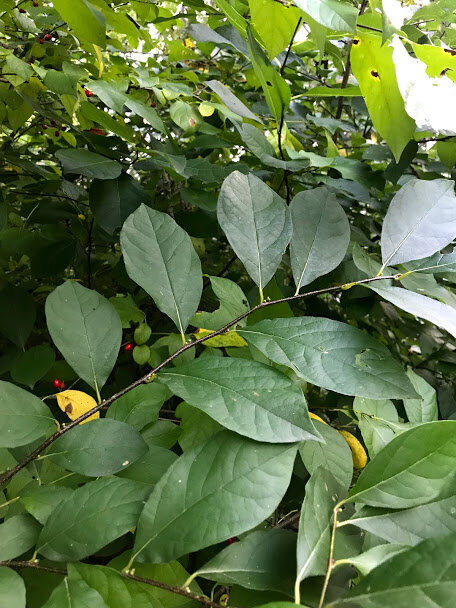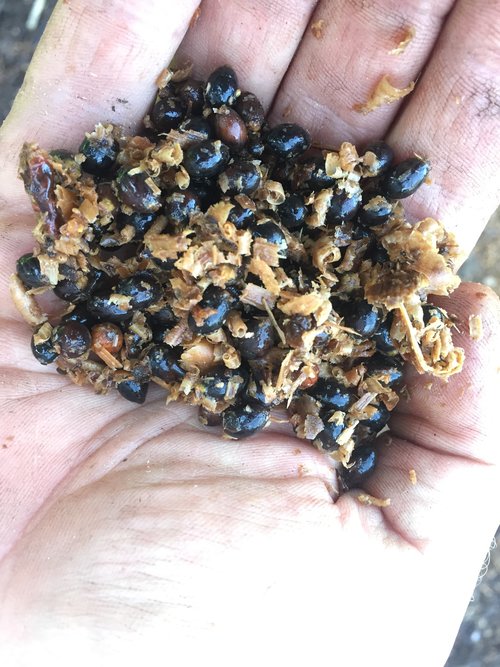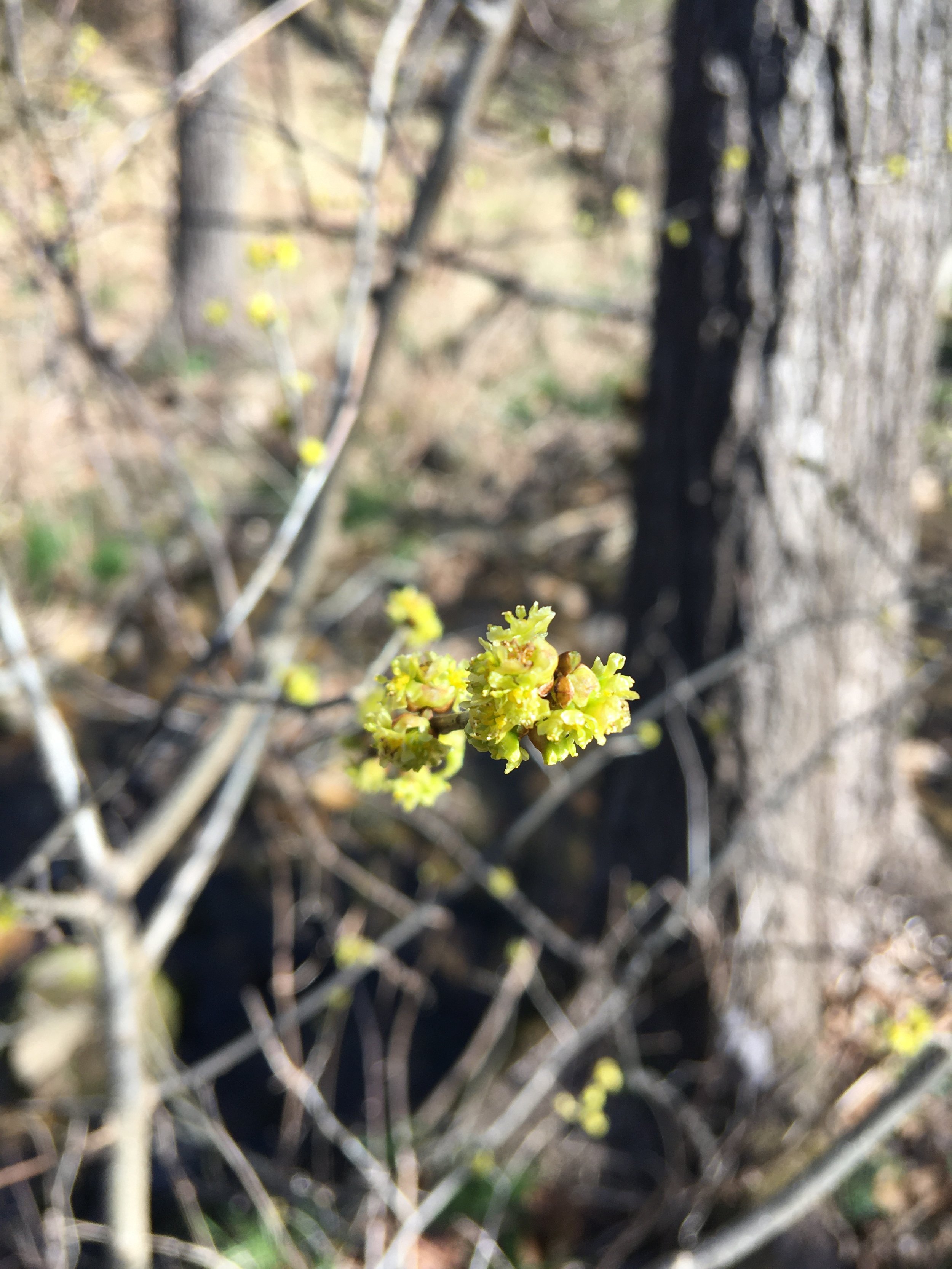Spicebush







Spicebush
Lindera benzoin
Plant for the forest understory, for the soothing steam bath, and for the homegrown native spice for your squirrel recipes!
Hardy from Zones 4-9. 6-12 feet tall and wide. Plant pollinating (male) and fruiting (female) individuals if you want seed.
Early Fall smells like Spicebush. Some compare the scent to allspice or lavender or wintergreen, but Spicebush is uniquely their wonderful self. We pick the red olive-sized fruit, hanging like bright Christmas ornaments, in September and dry them for coffee and soup flavoring, or crush them fresh for the soothing aromatic oil. Leaves and twigs exude the same fragrance as the berry, which can be dried and pounded into flour to spice up recipes. The whole plant is a handy mountainfolk spice: we’ve found references in Appalachian cookbooks to flavor up squirrel! Indigenous Appalachian tribes have all used Spicebush for medicine, drinks, and to flavor game. Teas treat coughs, cold, and intestinal parasites. We grind berries into morning coffee and toss them into Winter stews. The bark is known as a tonic and diaphoretic, especially as a steam bath to bring out sweat and ease aches and pains. Once upon a time Spicebush was also a common treatment for typhoid fever, and leaves have camphor which can be a handy disinfectant or insect repellent.
Not only does the fruit smell good, but they have a high fat content that gives needed energy to migratory birds. Over 20 species snack on Spicebush, including wood thrushes and swallowtails. Deer, rabbits, raccoons, and possums nibble on them too. Spicebush grows in woodlands all over the Eastern United States and parts of Canada. They coppice well and sucker easily to form clonal patches with a preference for dappled shade and deep moist rich soil. Colonizing surveyors used Spicebush as an indicator of good agricultural land.
We grow our Spicebush from seed we save from friends’ woodlands and our own riparian understories.